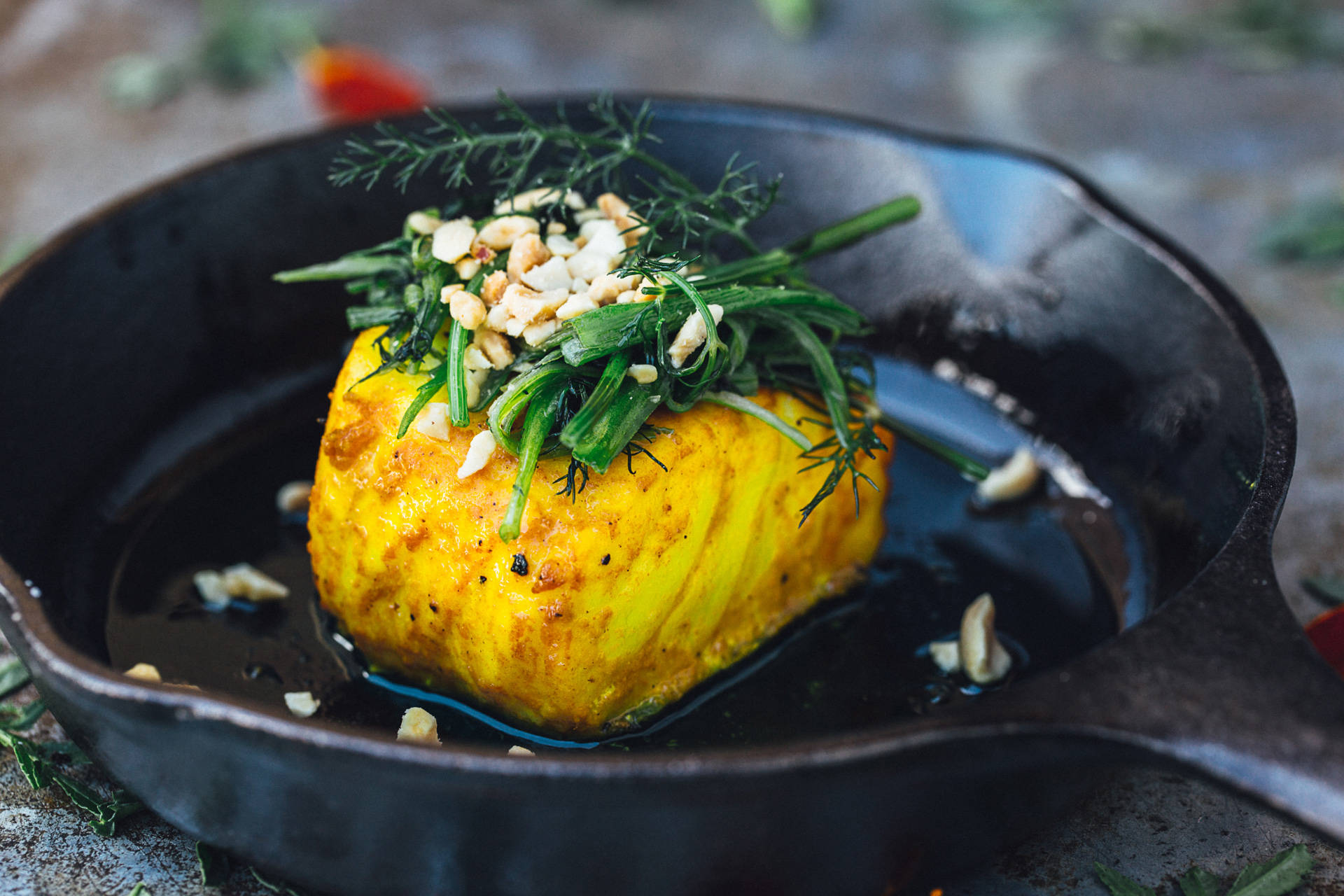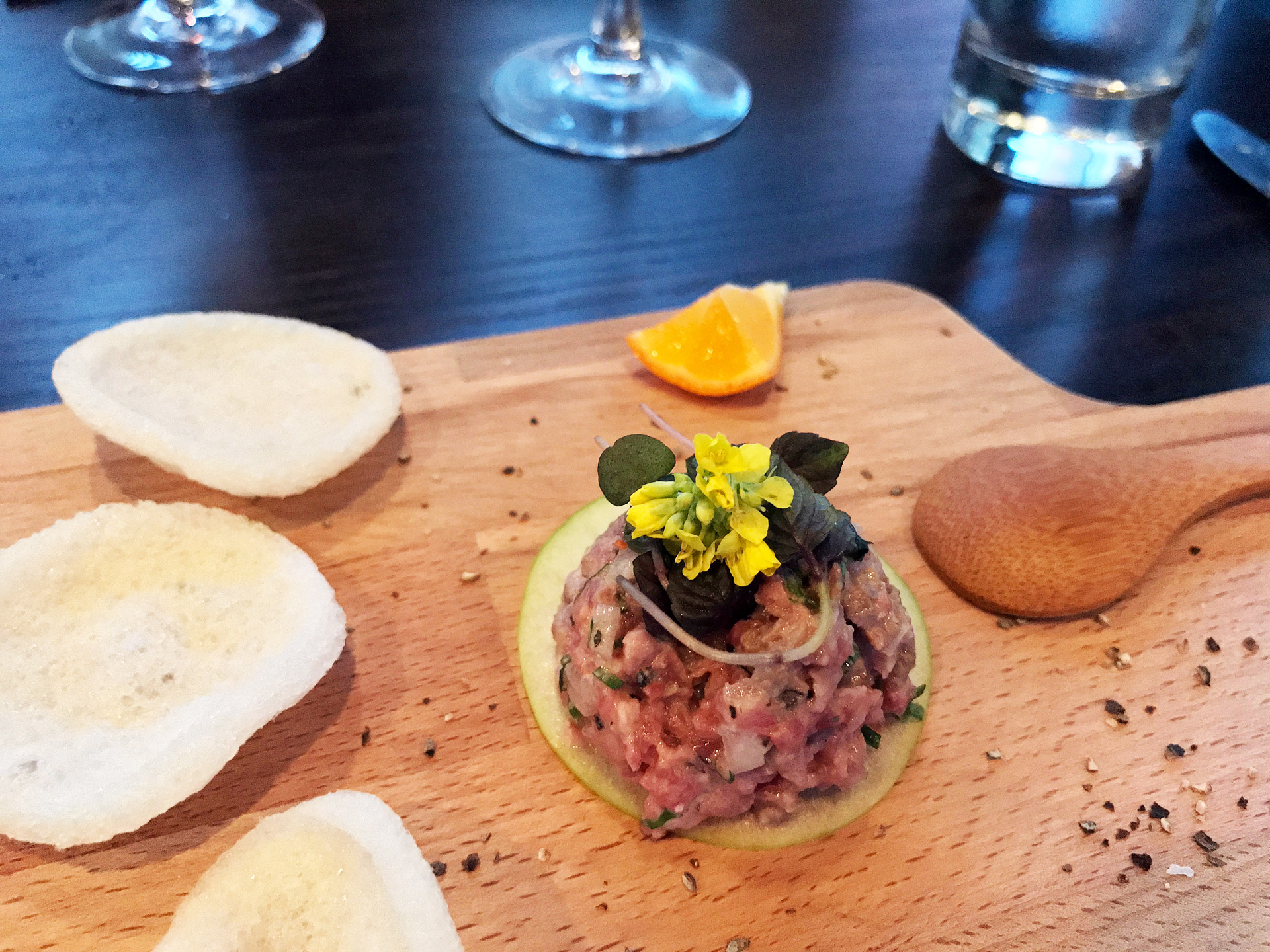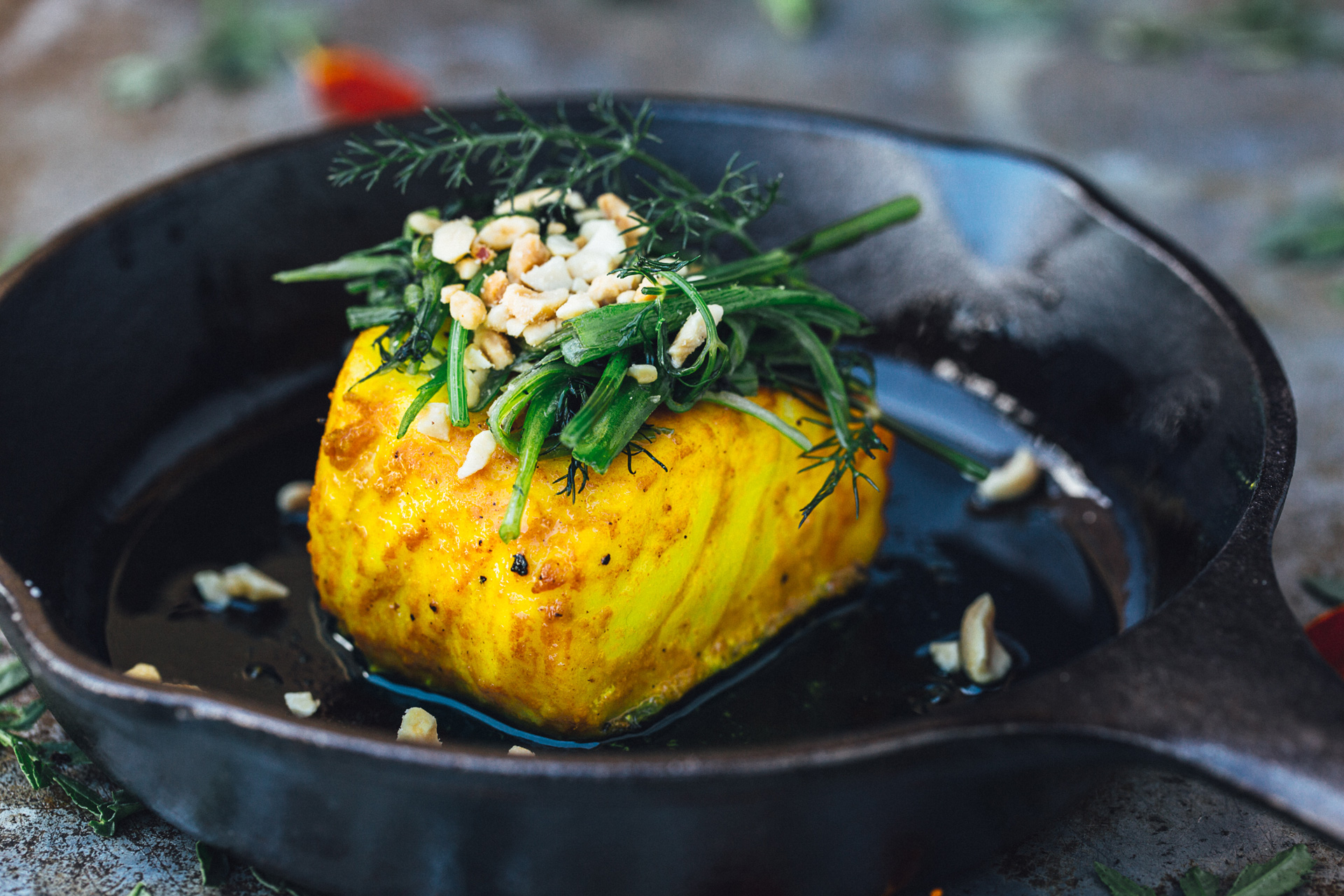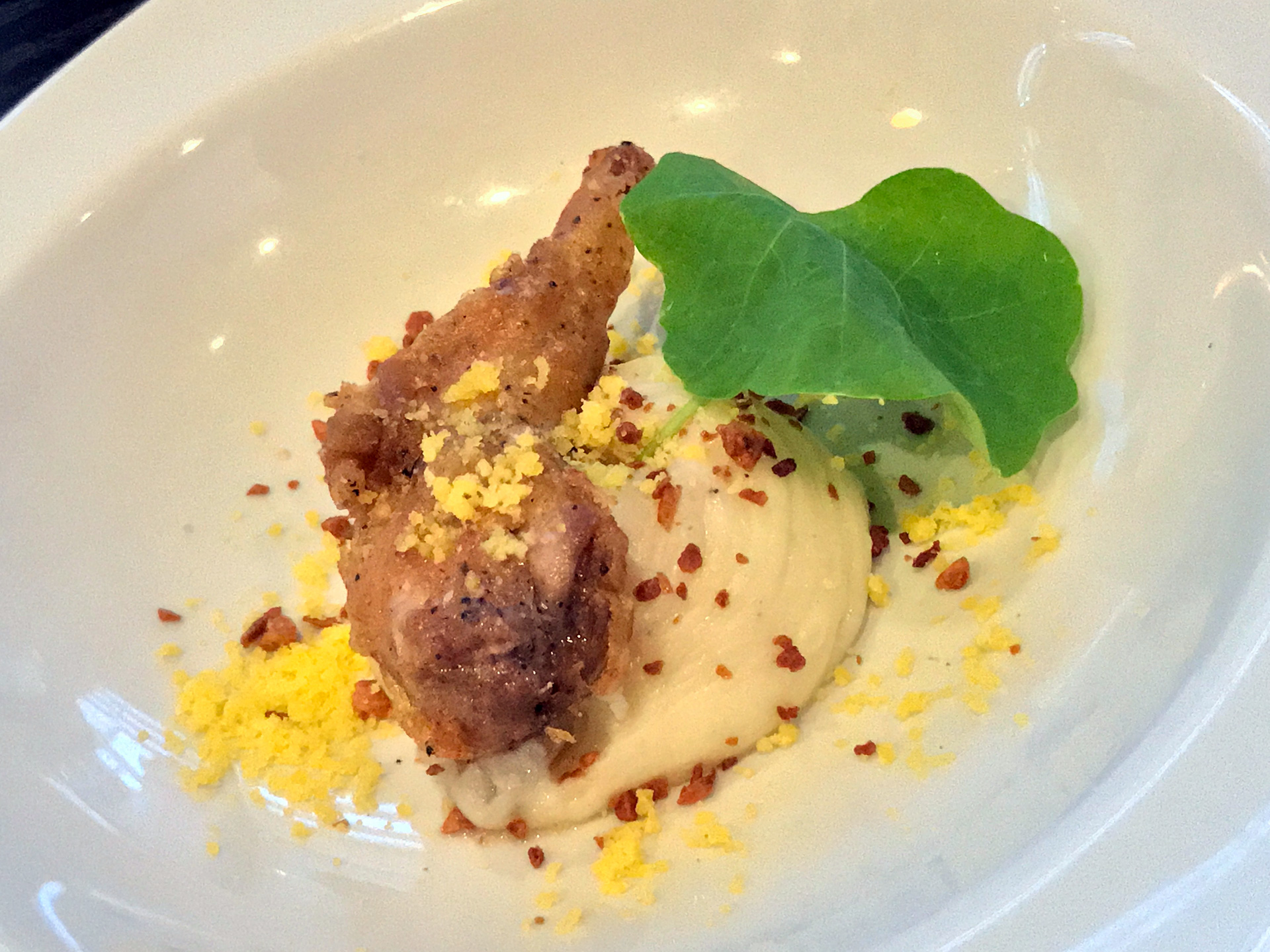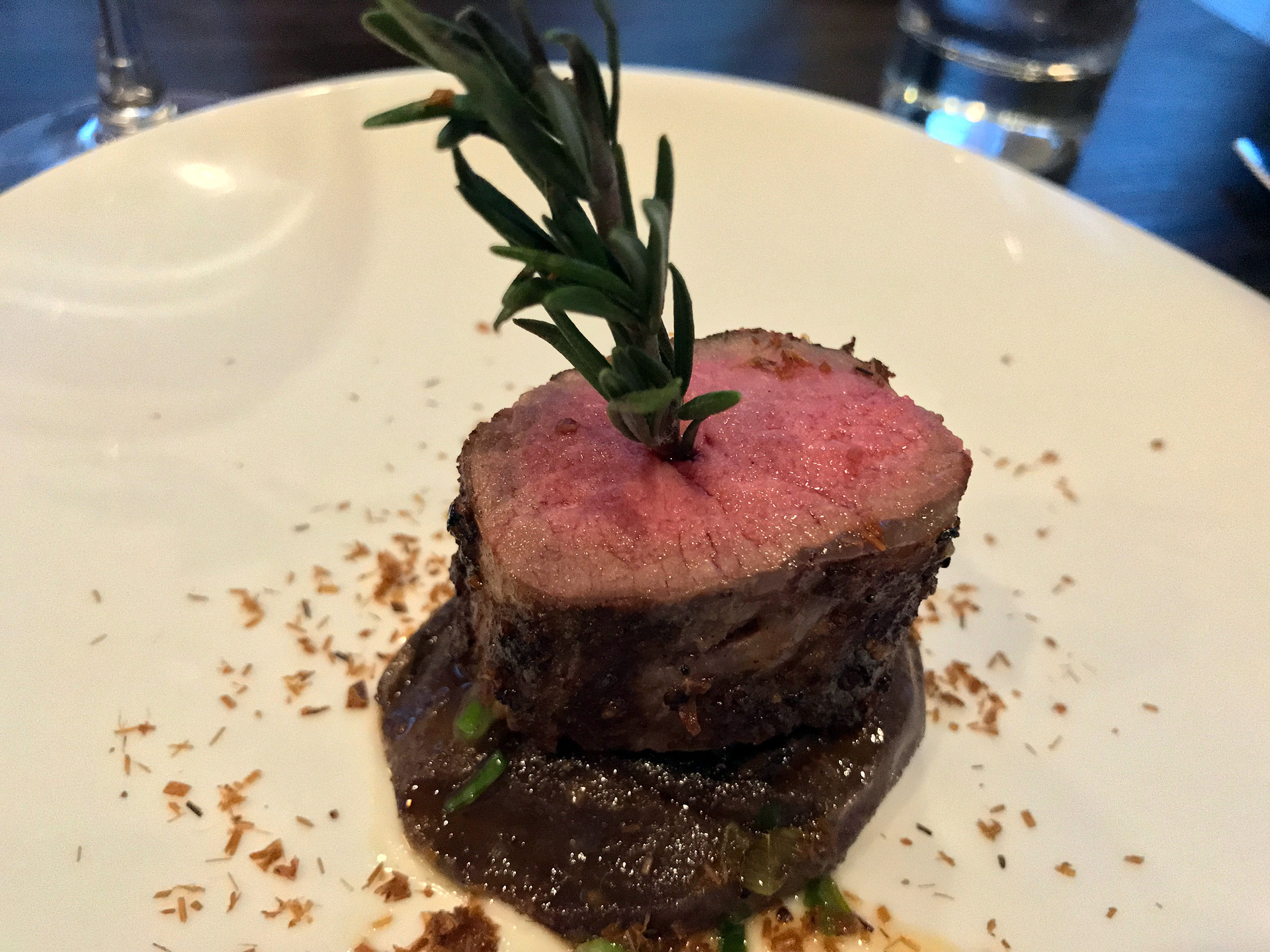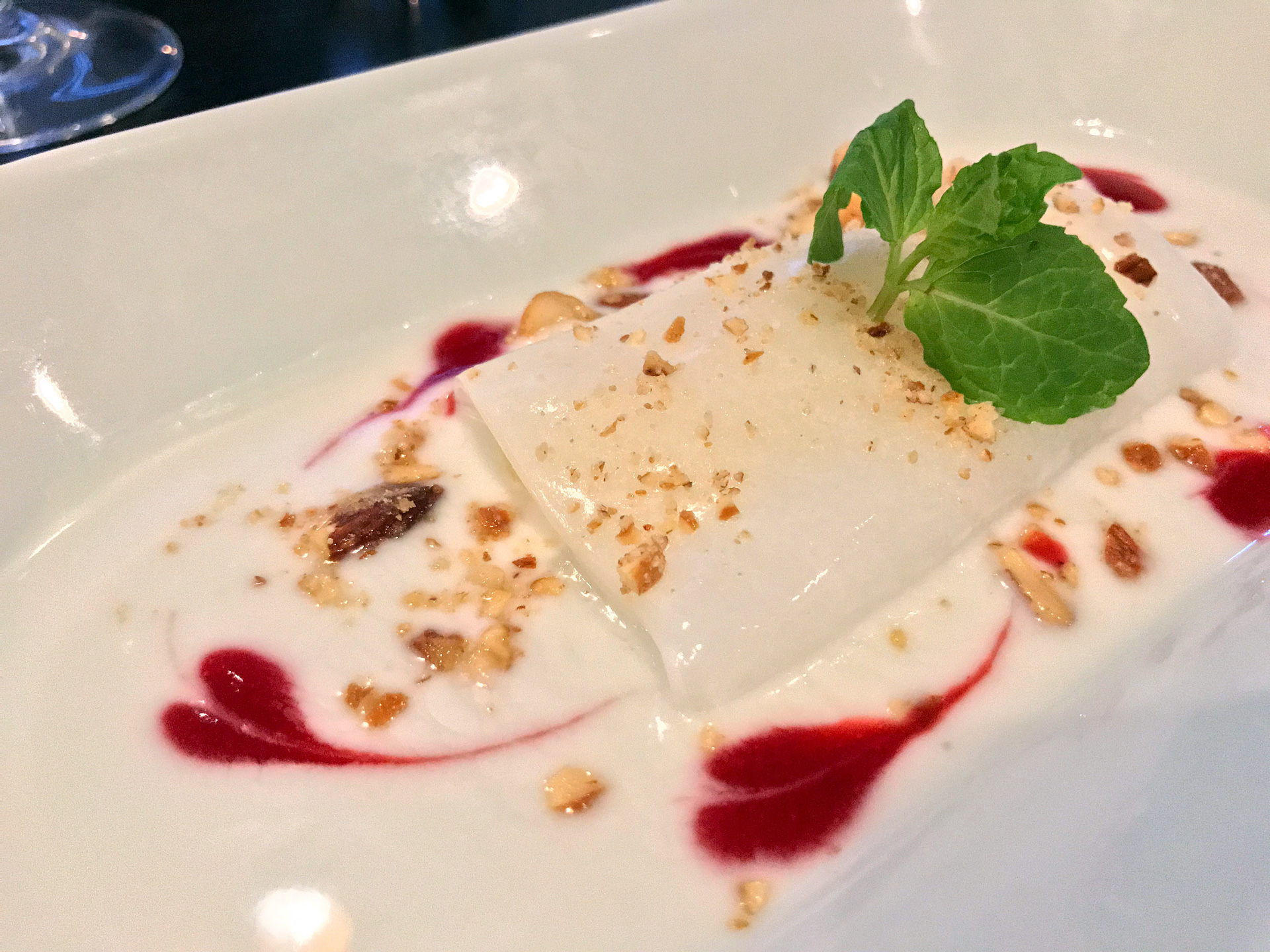Khai Vietnamese Nouveau, which opened on Townsend and 7th Street at the end of 2016, implies a kind of fusion food, the likes of which we’ve seen before. Maybe French-inflected Vietnamese cooking, I thought, or pan-Asian hybrid dishes that incorporate local ingredients into traditional cooking styles. It is neither of these things. Rather, Khai is an homage to chef Khai Duong’s home, Nha Trang (a coastal city in southern Vietnam); the classical cooking techniques he learned at Le Cordon Bleu; and his large imagination for envisioning unique flavor combinations for both our local bounty and for special imported ingredients you won’t see elsewhere in the U.S.
Case in point is dish number one of ten in Duong’s leisurely tasting menu: fresh seaweed salad with onion, mint, chili dressing, chopped peanuts and shallots. The seaweed is a deep-water white variety found only in parts of Vietnam, for which there are no U.S. importers. So, his family in Nha Trang sends him a batch every two weeks. Duong, better known as Chef Khai, explains that this seaweed is difficult to get even in Vietnam because most of it is exported to Japan for collagen extraction. Besides being gorgeous, the dish is flavor-saturated, the seaweed crisp and succulent.
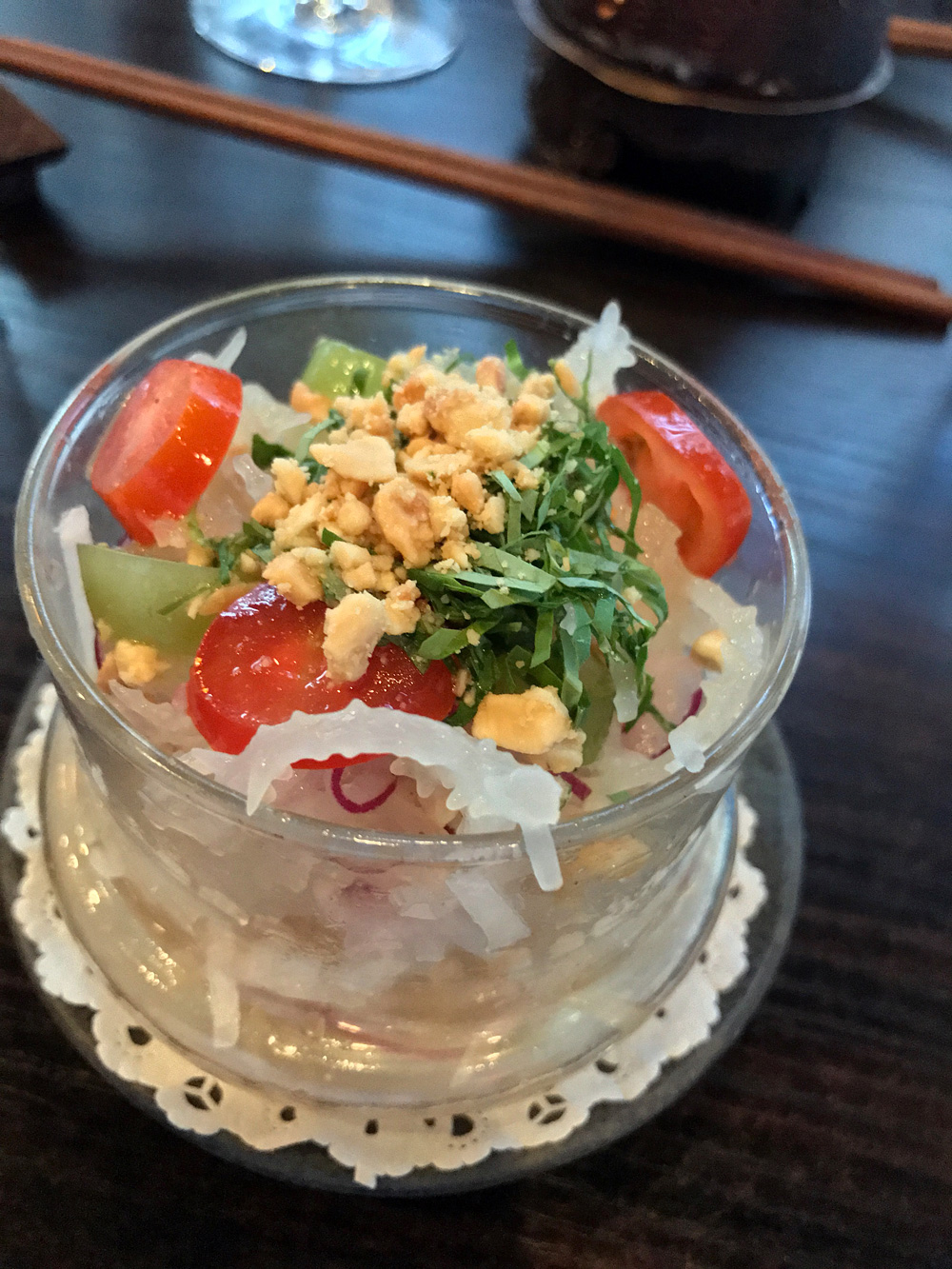
The next dish, wildly creative and equally precise as the seaweed salad, is a wild matsutake mushroom paté served with homemade rice crackers, presented on a piece of coral with honey and pink Himalayan salt. It’s an attractive dish as well as a delicious one, allowing you to experiment with proportions of sweet, salty and umami flavors.
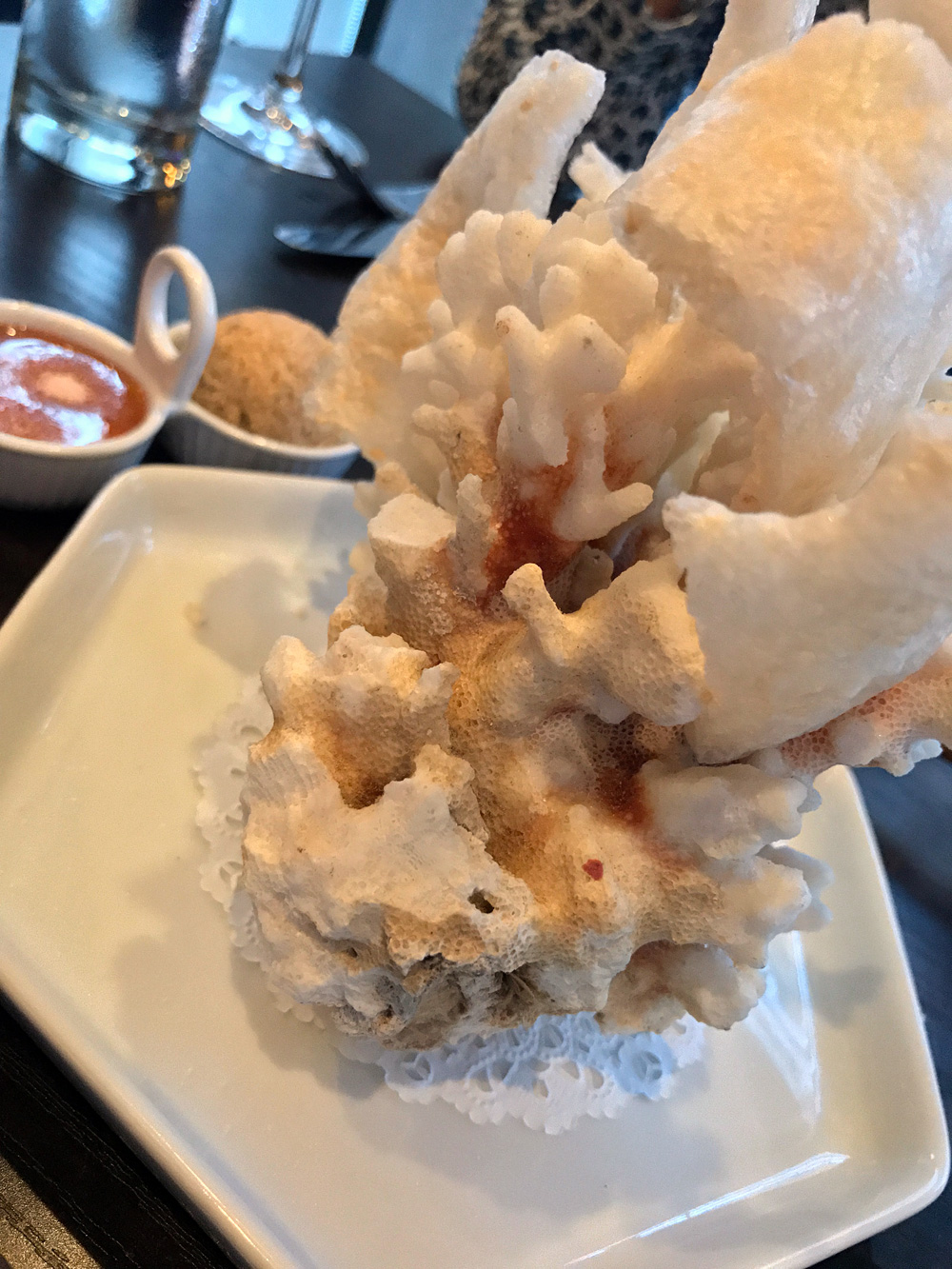
The crab sausage course is a very rich couple of bites of firm, smooth-textured sausage with more of those earthy-sweet matsutake mushrooms and magrut lime-jalapeño sauce, an ethereal yet complex dish I can’t even imagine trying to replicate, presented simply on a pickled watermelon radish. While any dish on this menu could become a signature for Chef Khai, I predict that this one will become synonymous with his evolving style.
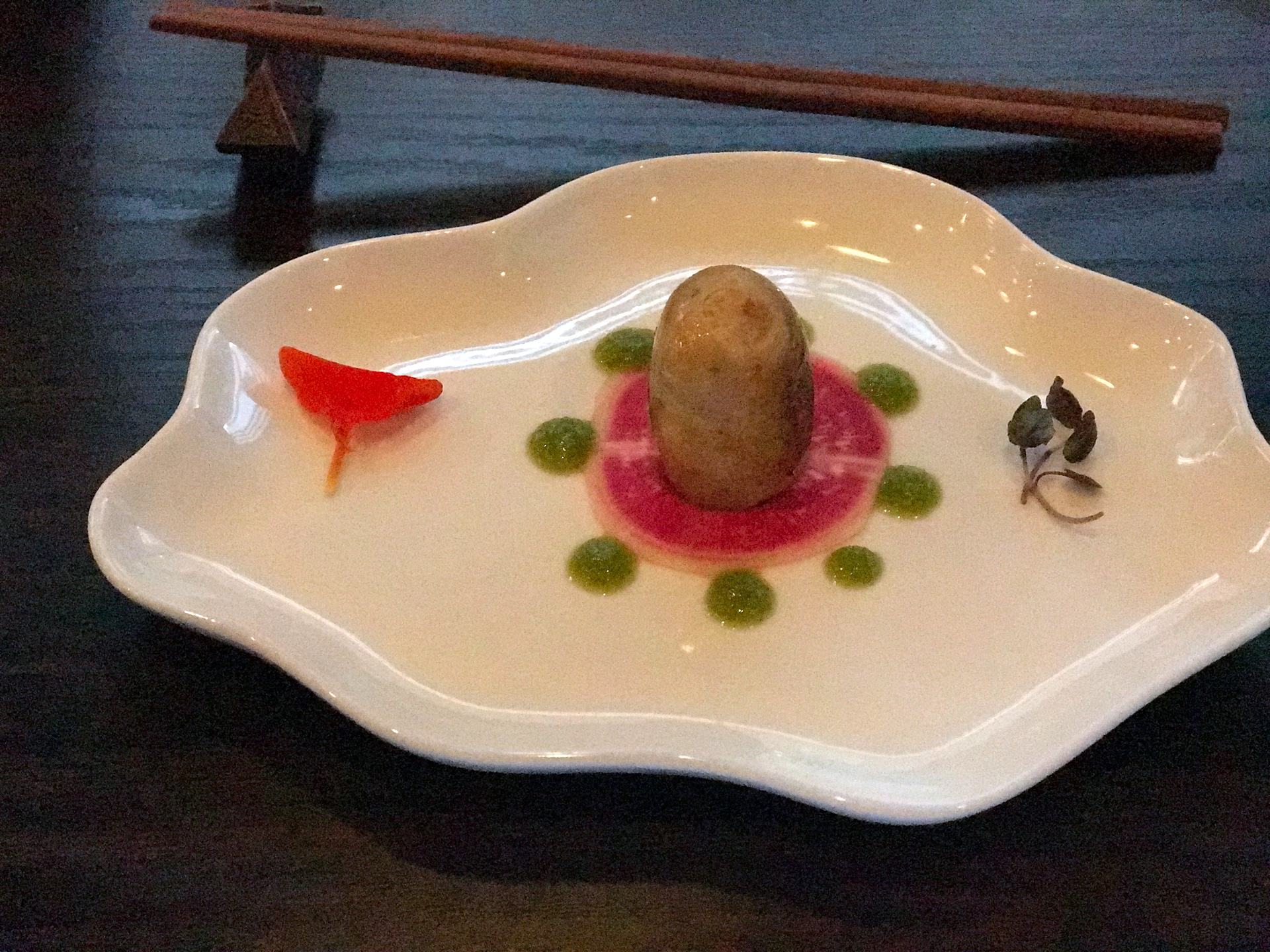
Duong mills about the room in between each course, serving guests and discussing the nuances of each dish. He has set up shop—just six two-top tables and a larger table in back—in somewhat of a permanent pop-up style, having rented the Bonjour Patisserie space for his two evening seatings, Tuesday through Saturday. He was forced out of the space that housed the much-loved, elegant, but more traditional Ana Mandara in 2012, after 12 years there, and then he spent four years traveling, mostly through Vietnam, to re-invent himself as a chef. His inspiration shows on each plate and throughout the tasting menu.
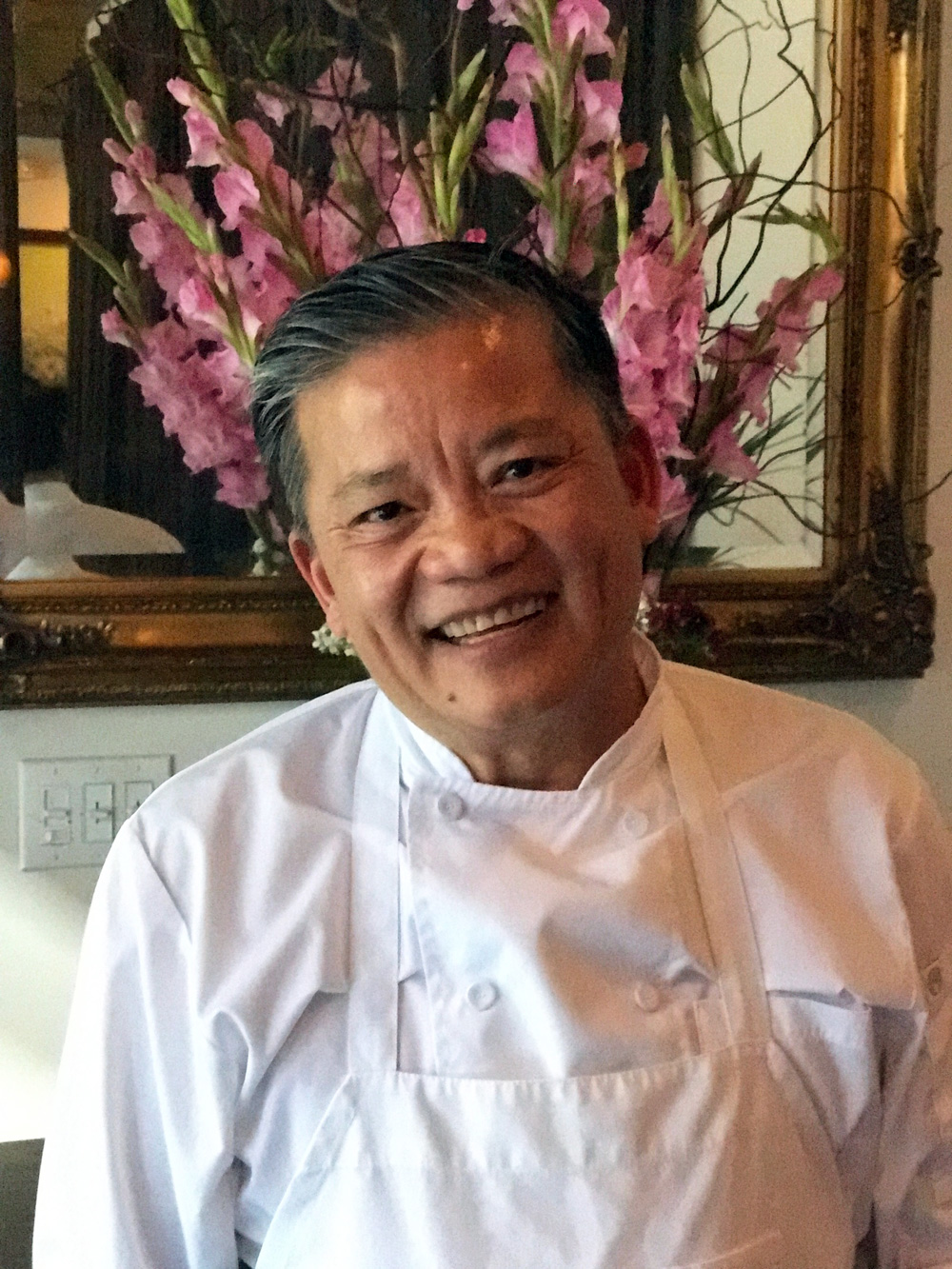
One of my favorite dishes, wild salmon ceviche with pork belly, rice noodle, egg, green apple, and banana sauce arrived next, a delicate, decadent salad-style ceviche in which the fish is not disguised with heavy citrus or other seasonings, but rather presented as the anchor on a plate of complementary flavors.
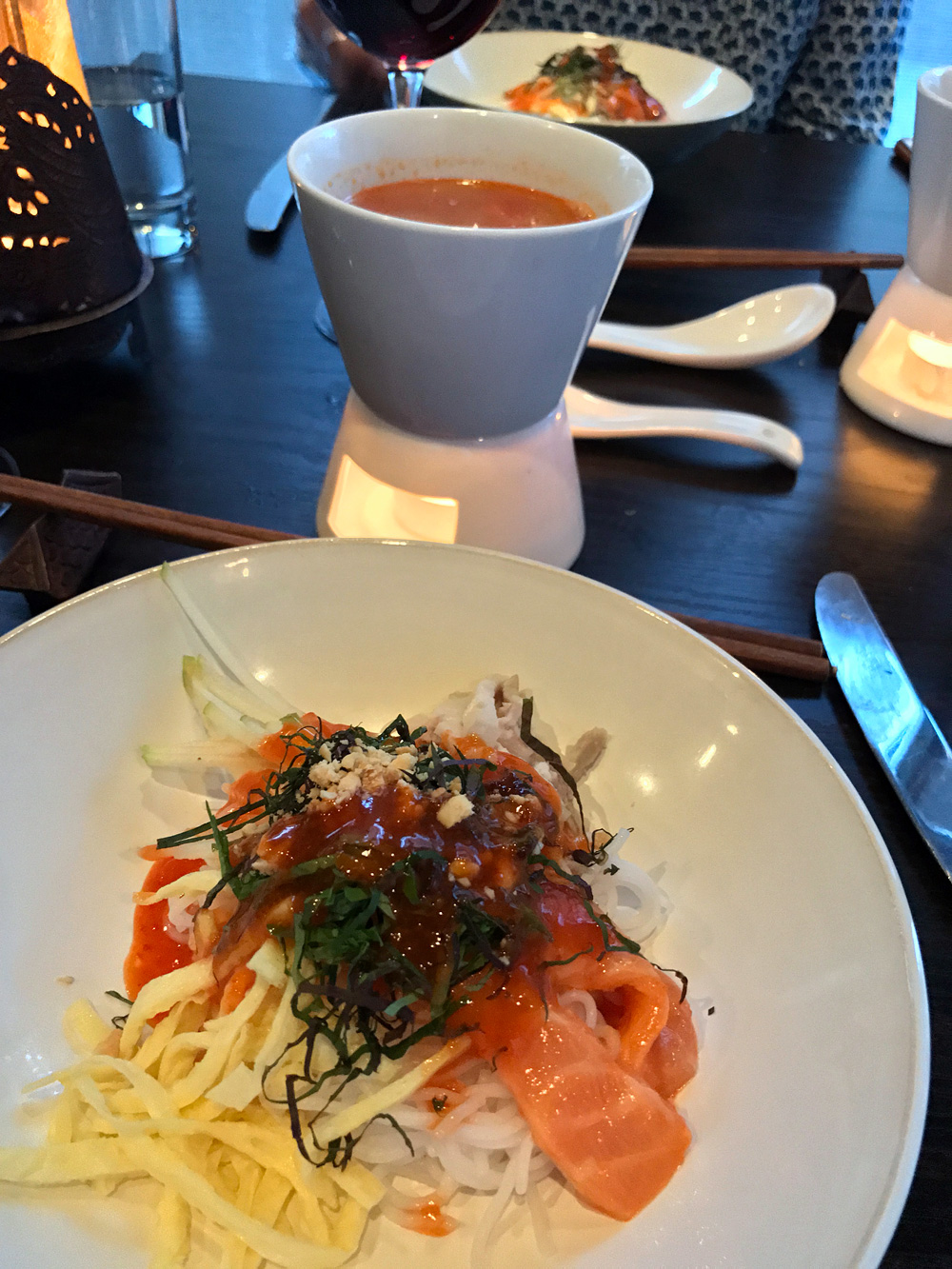
Up to now we’d been drinking a Noria Chardonnay, a Sonoma Coast bottling modeled after junmai-ginjo sake. Chef Khai’s approach to wine pairings is simple, even austere, and this philosophy works with his menu. The wine is not a distraction from the food in any sense, but a harmonious partner. We switched to red for the remainder of the meal, a Santa Rita Hills Pinot Noir that was appropriately more subtle than many Santa Barbara Pinot Noirs, but still came across as American in style.
